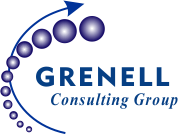“Having the most talented people in each of our businesses is the most important thing. If we don’t, we lose.” ─ Jack Welch while CEO of GE
“I am convinced that nothing we do is more important than hiring and developing people. At the end of the day you bet on people, not on strategies.” — Larry Bossidy
Many years ago when I was first beginning the transition from psychotherapist and president/owner of a very complex mental health, family counseling and substance abuse organization, I was piloting a particular personality profile tool that I thought might be of value to future consulting clients. The profile was very short and very simple and I was very skeptical. However, the sales rep for the company suggested I try it and review my results with her over the telephone. I was shocked at the accuracy of the results. It pegged me pretty much dead on. It described me as a leader (a bit of a bull in a china shop sometimes), sometimes too focused on my objectives and tasks to pay enough attention to others, highly creative, aggressive and strongly independent, to name a few of the characteristics.
I also asked a prior boss and good friend to take the assessment. When we compared our results, he said, “This is amazing. I never felt comfortable being the leader. You should have been the leader,” confirming something we both intuitively felt but did not know how to articulate.
Even though the report was about 90% accurate for me and for my prior boss, I wanted to increase my sample size. I offered my entire company the chance to take it and review their individual results with me. About fifteen people did. I had worked with most of these people for many years and knew them well. They included executives, administrative assistants and clinicians and the results were astounding.
Paul was a superior clinician who simply could not produce enough clinical hours to be productive, came out as very laid back, complacent and with low scores on drive and ambition. Everyone loved him but he was very weak in time management, goal setting, and assertiveness and was too patient to get things done.
Dan, our operations director was organized, efficient, set clear goals and was highly analytical and could make decisions. However, he was not very creative, lacked vision and was exactly where he belonged, in the second position; but would never be a good fit for the CEO position; he was simply too conservative.
Barbara, a member of our administrative team was revealed to have much more potential than we were using. She was very detailed and analytical, great with people, excellent at setting and tracking goals. We changed her career path as a result of the testing and interviewing and put her in charge of all our clinical charting, a painful and labor intensive job which she loved and excelled at.
I was hooked and over the years have helped numerous organizations implement personality profiles as part of their talent management system. I have come to believe that any organization that does not properly use personality testing is making poor decisions in their hiring, developing, retaining and engaging people. Even the most expert interviewers would benefit greatly from using them.
Over the next few columns I am going to explain more reasons for using assessments. For right now I will give you an overview.
- Assessments reduce hiring mistakes. It has been my experience that most companies primarily use resume reviews and unstructured interviews as the primary basis for their hiring decisions. This usually results in about a fifty per cent success rate of hiring A or B players. Proper use of personality profiles increases the success rate to about eighty or ninety percent.
- Coaching. The results of the profiles provide managers great coaching material to guide the new employee to understanding and utilizing strengths and minimizing the impact of weaknesses.
- Team building. Teams that are open and candid enough to share the results of their profiles with each other develop a tolerance and acceptance quickly. They learn to value diversity and to play to each other’s strengths rather than their weaknesses.
- Succession planning. It is pretty easy to spot the leaders using profiles and to avoid putting followers in leadership positions. It is also possible to create benchmarks for critical positions to assess candidates against.
- Development. Profiles are an important part of targeting what areas a prime for development for future career paths.
Pretty much like a Swiss Army Knife. Follow up coming columns for more.
